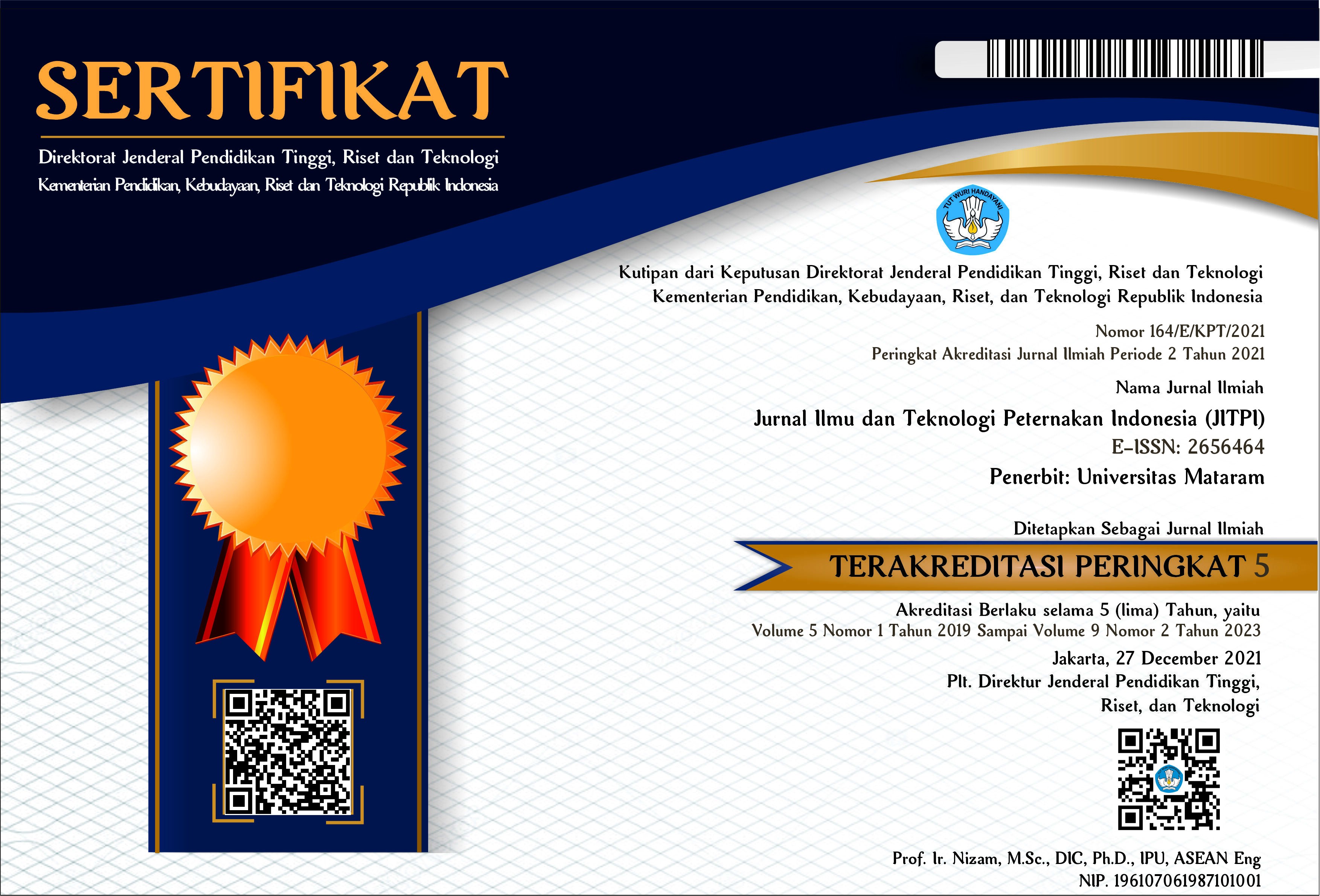Sistem Produksi dan Produktivitas Ayam Arab yang Dipelihara sebagai Penghasil Daging: Studi Kasus pada Peternakan Rakyat di Desa Mantang Lombok Tengah
DOI:
https://doi.org/10.29303/jitpi.v3i1.35Keywords:
small farms, Arabic chicken, body weight, carcass weight, carcass primal cutAbstract
The study aims to determine the production system and productivity of Arabic chickens maintained as meat producers. The study was conducted at a small farm in the village of Mantang, Central Lombok district. Production profile measurements were carried out at the Laboratory of Poultry Production, Faculty of Animal Science, University of Mataram. The farm was determined using purposive sampling method. The number of chickens used for samples of body weight measurement was 10% of the total population. Ten percent of the weighted samples was used for the measurement of carcass and non carcass weight. Variables observed were the production system and production productivity which included: slaughter age, slaughter weight, blood weight, plumage weight, viscera weight, foot weight, head weight, abdominal fat weight, and carcass weight. Data obtained were tabulated and analyzed descriptively. The results of the study found that Arabic chicken farms were observed as part-time businesses that employed family members with the application of a fairly good production system. Arabic chickens are kept until the age of 6 weeks in litter floor cages, with open walls and gable roof systems. The average body weight produced was 326.89±40.57 grams per head and carcass weight was 60.65 ± 8.08 percent. The highest carcass component is the back, followed by the weight of the chest, upper thighs, lower thighs and wings.

















